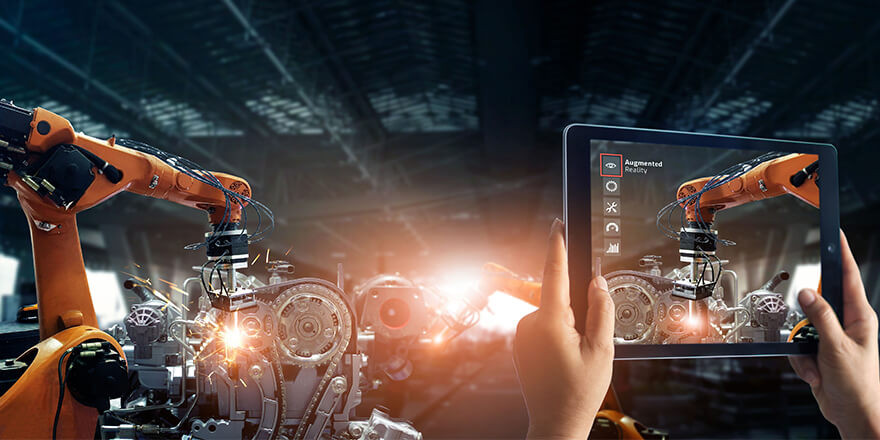
5 Ways M&D Companies Drive Efficiency & eCommerce with Augmented Reality
With Augmented Reality, manufacturers and distributors can increase:
- speed of production by 30%
- speed and accuracy of maintenance by 34%
- speed and efficiency of fulfillment by 25%
How are manufacturers and distributors dramatically improving efficiency? Augmented Reality applications for eCommerce allow B2Bs to streamline processes and drive incredible value for buyers. Get the full rundown below or watch the second half of our webinar here.
The AR Megatrend: Causes & Effects
COVID-19 forced a wave of digital transformation across industry sectors, accelerating the 10-year growth previously projected for the eCommerce market. As B2C companies raced to find new at-home buying experiences, B2B companies jumped on the bandwagon. Companies are realizing the dire need for digital technology.
2021 MARKET SURVEY
2021 State of eCommerce Report
Answer 5 quick questions for our 2021 State of eCommerce Report to receive a free usability assessment from Redstage!
Emphasizing this point, McKinsey’s “B2B Decision Maker Pulse” states your likelihood of being chosen as the primary supplier for a B2B company increases by 100% when you provide an “outstanding digital experience.” Seeking to meet “New Normal” buyer demands, manufacturers and distributors around the world began investing in 10 key areas, namely Augmented Reality.
Here are the top 5 ways M&D companies are using the technology, not only to increase value for buyers but for employees as well.
1. AR for Production
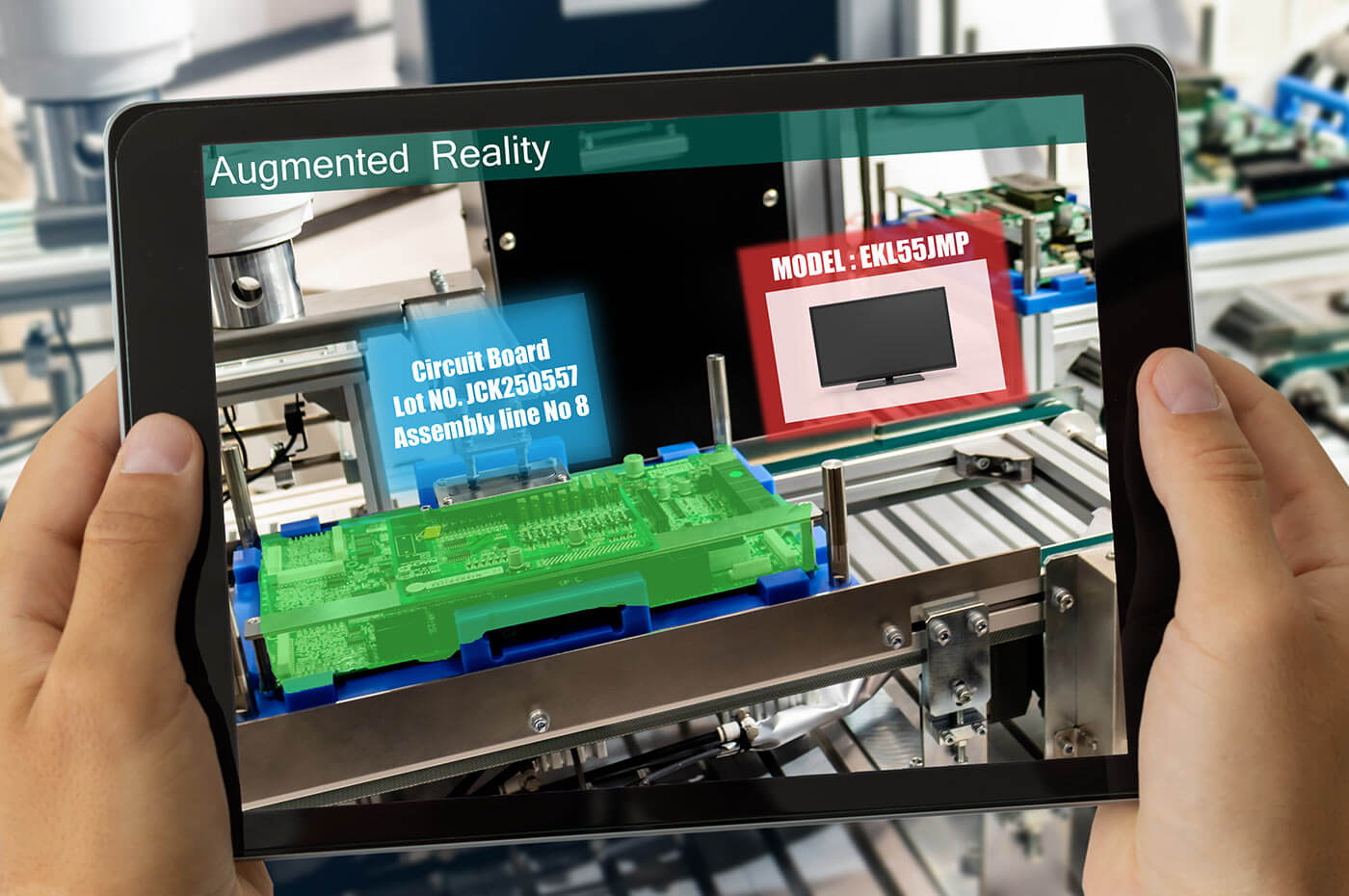
For the biggest B2B brands in the country, Augmented Reality is taking the production cycle to the next level. Shipping leader Cerasis determined that factory workers and engineers utilizing augmented reality in production can increase their accuracy and lower mistakes by up to 96%, and complete work up to 30% faster.
AR allows workers to see blueprints in eye view, shortening the time it takes for quality control. Leaving less room for human error and stopping mistakes before they ever happen. Workers can spot and eliminate defects in manufacturing by scanning products or production machinery from the factory floor or remotely.
Global Creative Director here at Redstage, Christopher Yin, had this to say:
2. AR for Maintenance
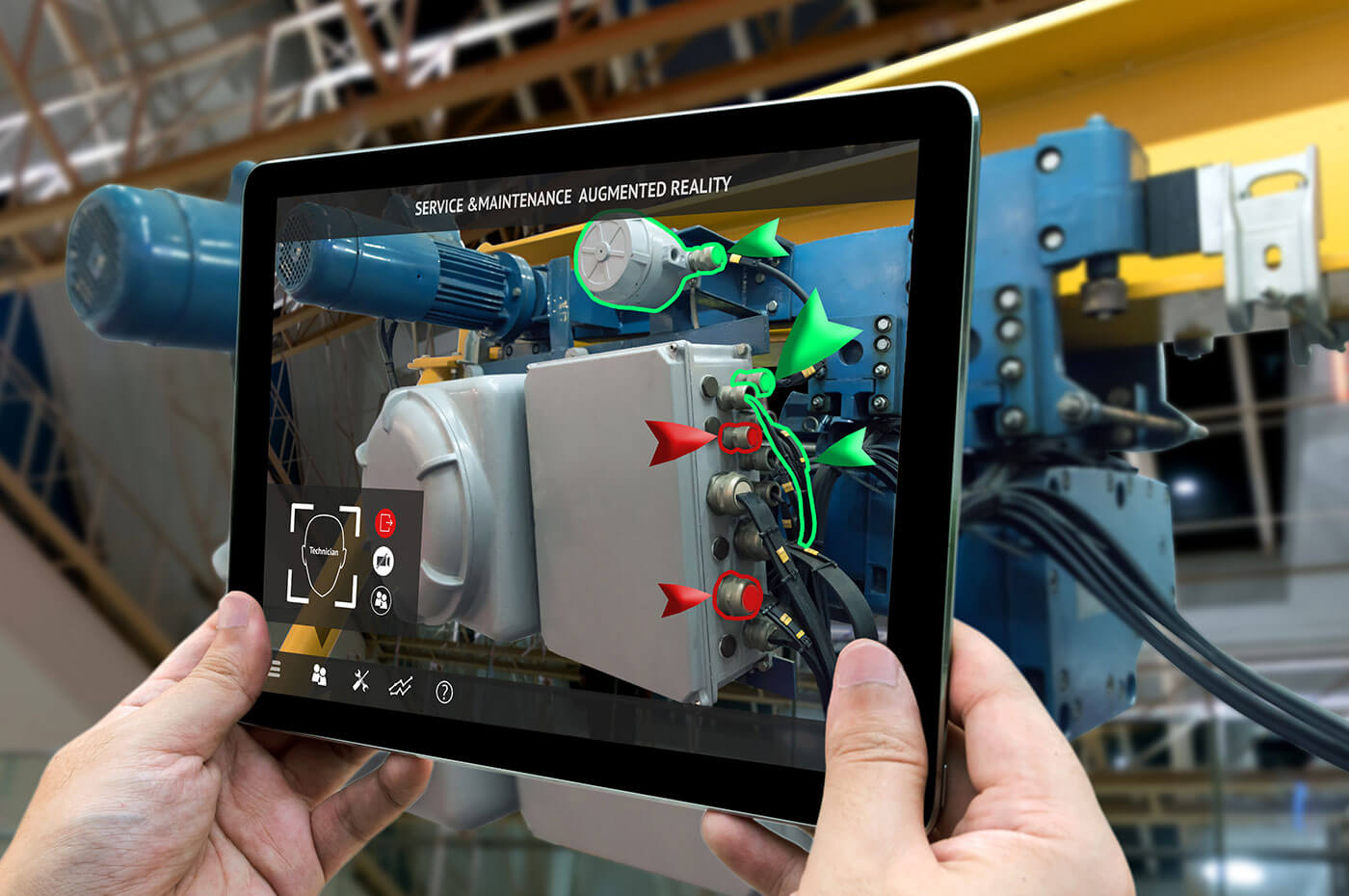
Shutting down your entire production line to run maintenance on one of your machines can cause huge delays on the assembly line and in production. Household name General Electric Renewables utilized Augmented Reality in their maintenance processes at a wind turbine production plant.
AR allowed engineers to work on wiring on the turbines with an augmented overlay, helping GE Renewables improve assembly time by 34%. They accomplished this by using AR to overlay correct wiring conditions over the current project. Technicians at GER are also using voice recognition to identify wiring and determine correct placements, limiting mistakes and potentially harmful accidents.
Engineers can scan over machinery using AR and view necessary information directly in their eye view. From last maintenance date to specific areas there may be a malfunction, augmented reality is keeping engineers safely out of harm’s way while also massively reducing maintenance time.
3. AR for Planning
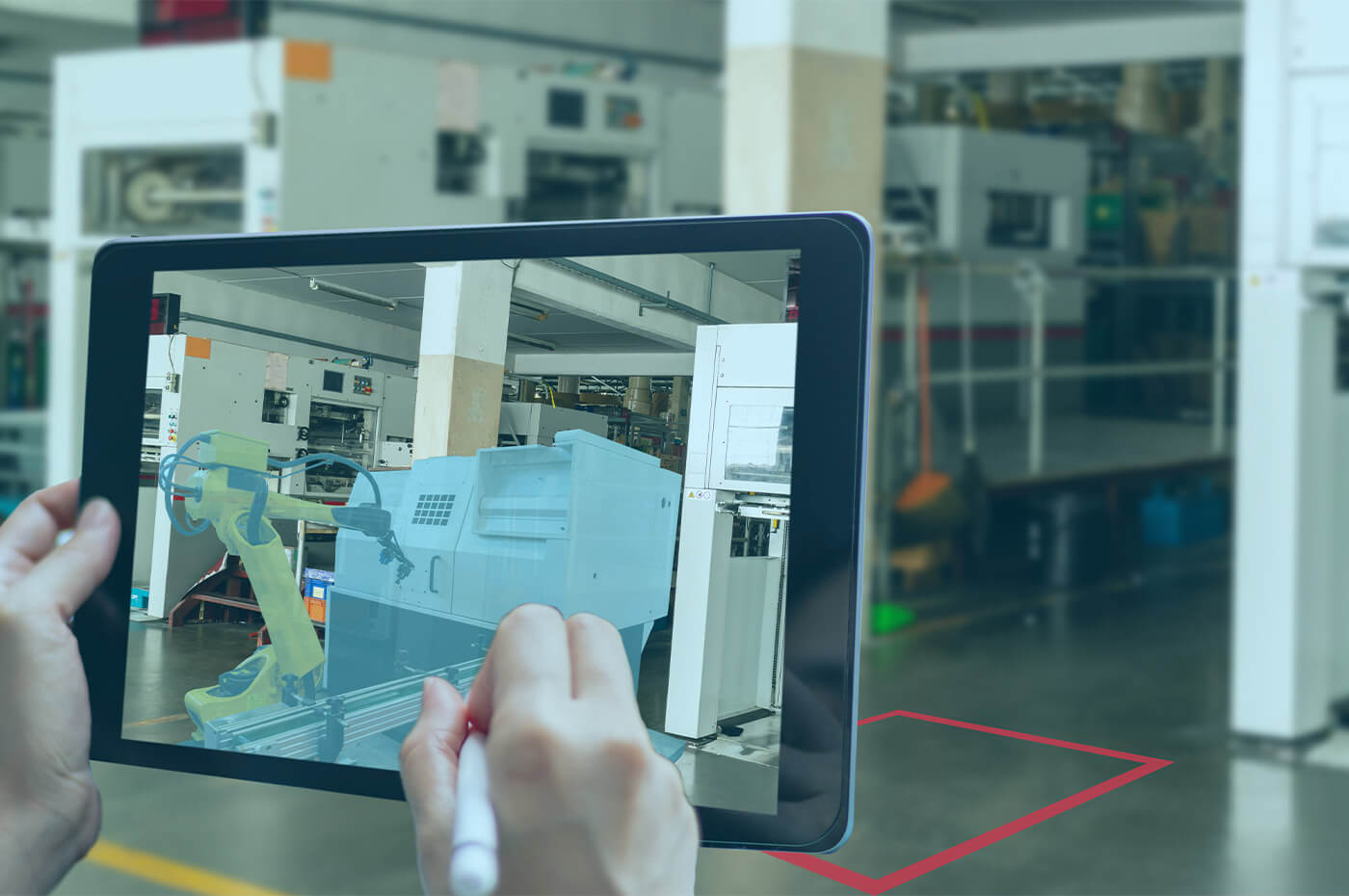
For sellers of large machinery like assembly lines or presses, the best way to ensure you have the space planned out correctly is to see the machine through an augmented reality lens. In a scientific research report titled, Virtual Planning, Control, and Machining for a Modular-Based Automated Factory Operation in an Augmented Reality Environment, researcher Yun Suen Pai and colleagues outline the importance of minimal friction and misplacement between machinery in a large production area.
According to the report, “AR was used to aid the planning process of manufacturing systems with the key advantage of modeling 3D objects in the actual factory. By using AR as a form of user interface, any user will be able to freely manipulate the overall layout design on a table-top, which is extremely user-friendly.”
In other words, place the machine virtually in the space you have for it beforehand, without the hassle of measurements or human error. Plan for your warehouse move or upgrade with AR before you do it, and limit headaches if there is a mishap. Hololens by Microsoft is even allowing remote teams to get a hands-free view of factories and warehouses, giving managers the freedom of focusing on their plans.
4. AR for Virtual Product Models
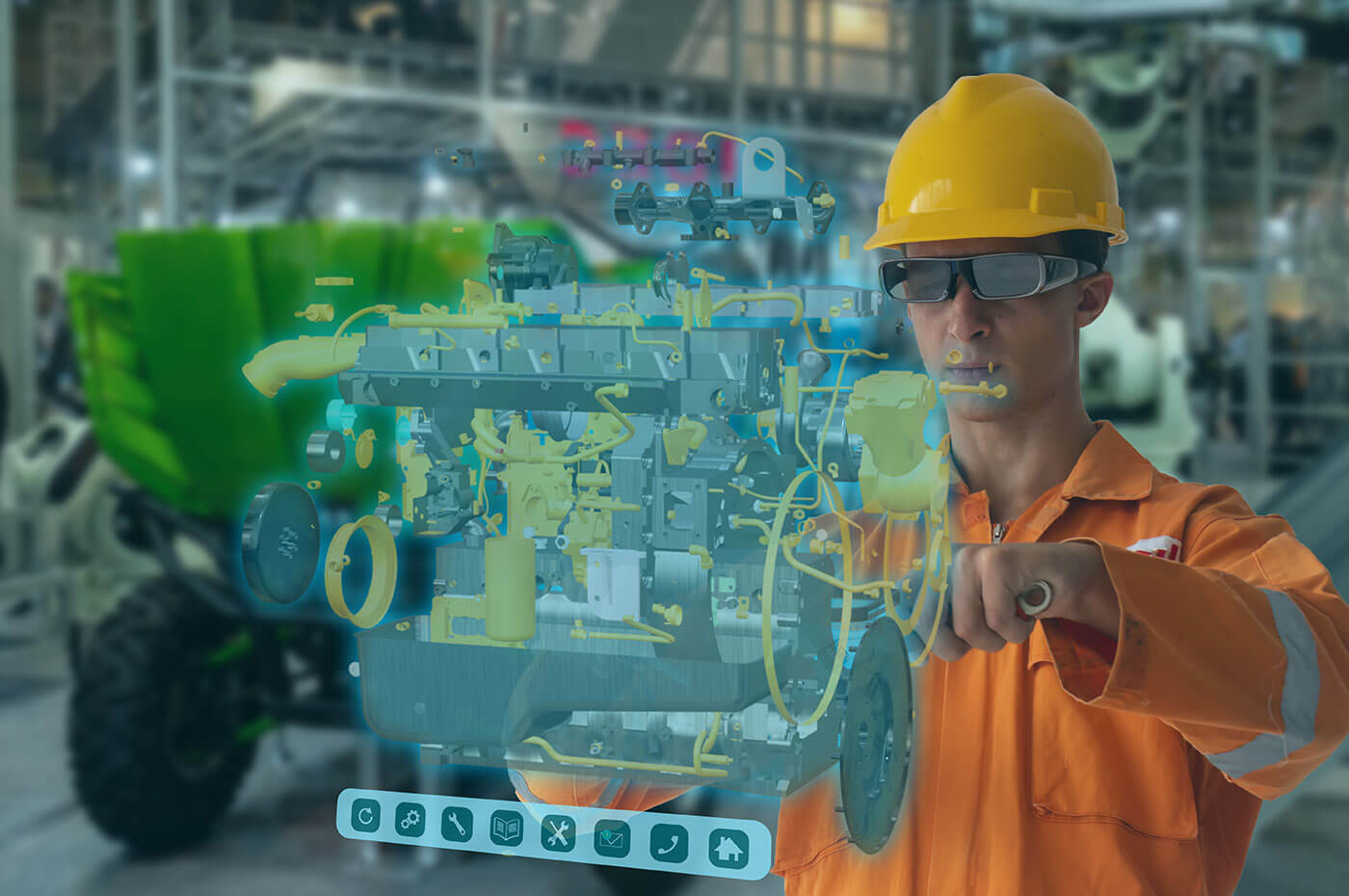
Jon Wade, Head of Augmented Reality and VR at Shopify, shed some light on the thoughts of buyers when viewing products in 3D. He said that “…when visitors viewed a product in AR before making a purchase, they were 65% more likely to complete that purchase.”
We’ve also designed AR experiences that allow DTC appliance companies to show off their appliances, like coffee machines and stoves, to buyers from the comfort of their own home. The same way manufacturers would plan where machinery would go in a large production warehouse or factory, homeowners want to plan where a new stove or coffee machine will go in their kitchen before buying. View a new appliance in 3D, place it on your counter, move it around and make sure your buyers are confident in their purchase to avoid buyer’s remorse and increase satisfaction.
Stove Range
We designed this sample model of an AR stove range to show retailers and manufacturers how popular appliances and machinery can be viewed in a home or business setting from anywhere.
📲 Point your smartphone camera at the QR code to try it out, wherever you are!

This is the same for B2B buyers as well. Whether you’re selling large industrial appliances to restaurant chains or construction equipment to job sites, utilizing 3D models and Augmented reality for your products can give your customers confidence in their purchase.
5. AR for Supply Chain and Logistics
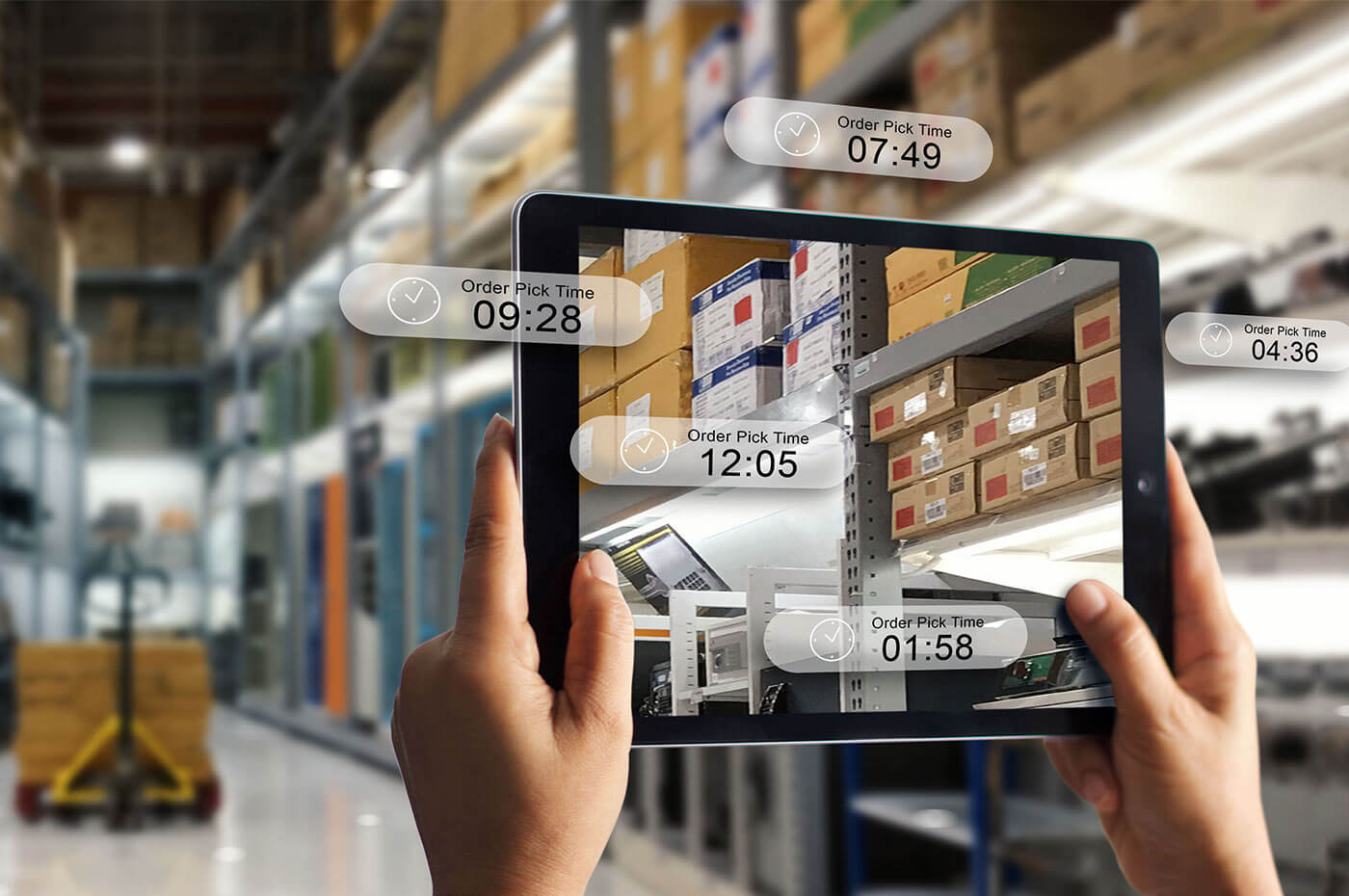
Distribution juggernaut DHL is making a staggering $300 million investment in AR technology, accelerating their investment in AR and other technologies. DHL Supply Chain North America CEO Scott Sureddin said, “This investment is about a holistic view of emerging technologies that enable our customers to achieve their growth and profitability goals… Therefore, it is important that our customers can benefit from our experiences and expertise with a variety of emerging technologies.”
DHL successfully carried out a project testing smart glasses and Augmented Reality in one of their warehouses. The technology was used to implement ‘vision picking’ in warehousing operations. Their staff members were guided through the warehouse by graphics displayed on the smart glass to speed up the picking process and reduce errors. The project resulted in a 25% efficiency increase during the picking process.
The Fastest Way to Implement AR
Augmented Reality is growing in adoption from buyers and sellers alike. Don’t fall behind your competition, be the first in your space to implement AR in both your warehouses and online buying portals. Watch this on-demand webinar with our Creative Director Christopher Yin and Shopify’s Head of AR and VR Jon Wade for the full story, on how AR is changing eCommerce in B2C and B2B alike.
SCHEDULE A DEMO
Schedule Your 1-on-1 Augmented Reality Demo
You’ve heard from our AR experts in this article, now connect with them to get a free personalized demo of what Augmented Reality can do for you!
Subscribe to our newsletter to ensure you never miss B2B eCommerce insights, trends, and new technology from our team. Don’t forget to follow us on Twitter, Linkedin, Instagram, and Facebook too!


Recent Comments